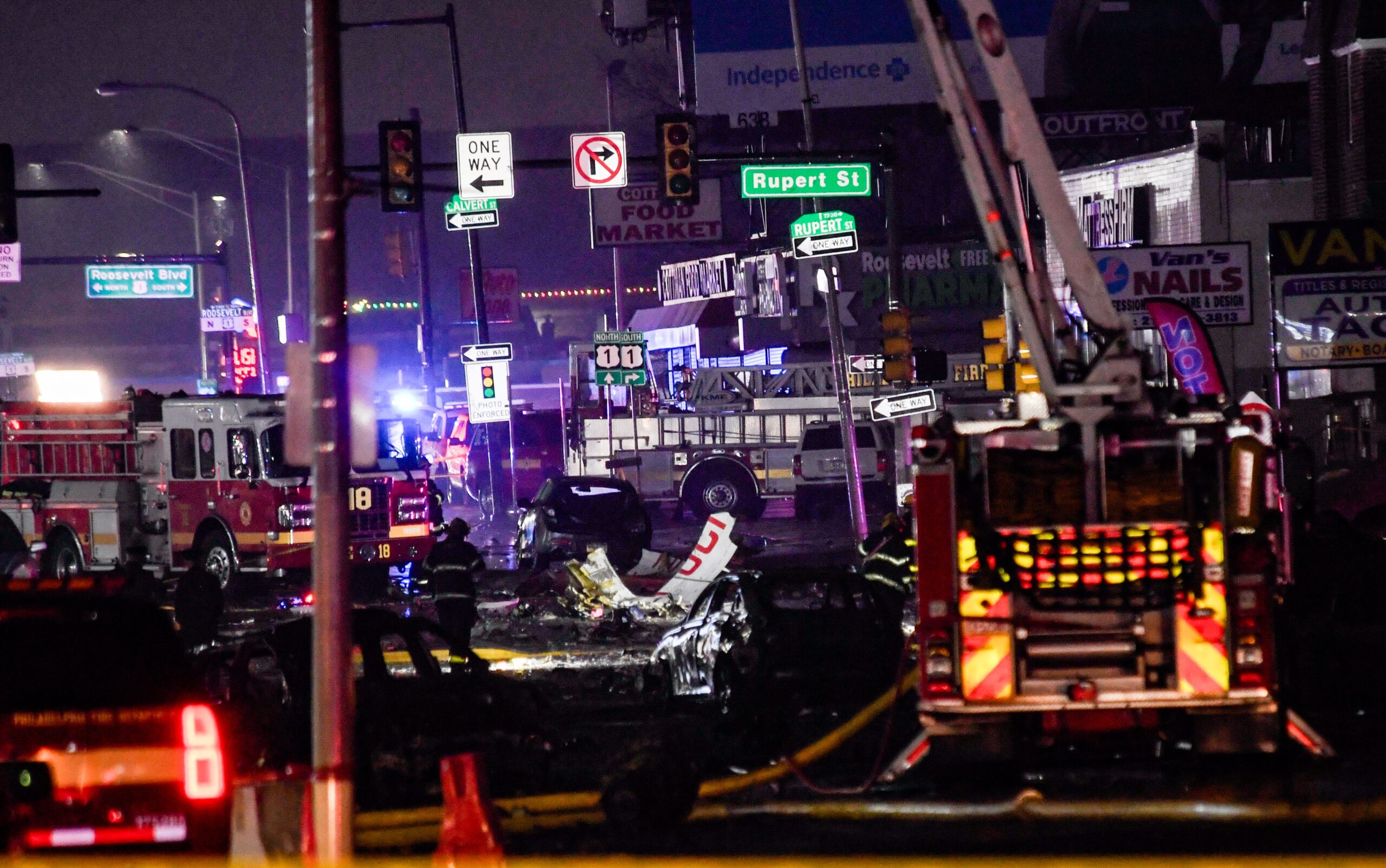
NTSB Releases Preliminary Report on Fatal Philadelphia Plane Crash
The National Transportation Safety Board (NTSB) has issued its preliminary report regarding the tragic plane crash that occurred in Philadelphia on January 31st. The incident involved a medical transport Learjet 55, registered in Mexico, which crashed shortly after takeoff from Northeast Philadelphia Airport. The report details the initial findings of the investigation, providing a timeline of events and outlining the scope of the devastation.
The Learjet 55, operating as an air ambulance flight, was en route to Springfield, Missouri when the crash occurred. The report confirms that all six people aboard the aircraft perished in the accident. Tragically, one person on the ground was also killed, and 24 others sustained injuries. The impact and subsequent explosion scattered debris across a wide area, causing significant damage to homes, businesses, and vehicles in the residential neighborhood.
According to the preliminary report, the Learjet 55 departed from Runway 24 at Northeast Philadelphia Airport at 6:06 p.m. Initial flight data indicates that the aircraft climbed to an altitude of approximately 1,650 feet before initiating a left turn. Following the turn, the aircraft began a rapid descent. The last recorded altitude of the aircraft was 1,275 feet, with a speed of 242 knots.
Notably, the NTSB’s report states that the pilots did not issue any distress calls prior to the crash. Surveillance footage from the area captured a large explosion at the crash site, indicative of the force of the impact. Debris from the aircraft was scattered over an area spanning approximately 1,400 feet, underscoring the severity of the event and the widespread damage it caused.
The NTSB investigators have recovered the aircraft’s cockpit voice recorder (CVR) from the crash site. The CVR was found buried under approximately eight feet of debris, highlighting the challenges faced by the investigators in their recovery efforts. However, the preliminary report also indicates that it is likely the CVR had not been recording audio for several years prior to the crash, a significant setback for the investigation.
The aircraft’s Enhanced Ground Proximity Warning System (EGPWS), designed to alert pilots of imminent terrain hazards, has been shipped back to its manufacturer for thorough evaluation. The NTSB hopes that analysis of the EGPWS unit will provide valuable flight data and shed light on the circumstances leading up to the crash. The system’s data recorder might reveal if the pilots were aware of the ground proximity and if the system issued any warnings.
The investigation remains ongoing, and the NTSB is continuing to gather information and analyze data in order to determine the probable cause of the accident. The full investigation will likely involve a comprehensive review of the aircraft’s maintenance records, the pilots’ flight history and training, weather conditions at the time of the crash, and air traffic control communications.
The incident has raised concerns about the safety of air ambulance operations and the potential risks associated with flights operating in densely populated areas. It also underscores the importance of ensuring that critical safety systems, such as the cockpit voice recorder, are functioning properly and regularly maintained. The tragic loss of life and the widespread damage caused by this crash have deeply impacted the Philadelphia community.
The NTSB’s final report, expected to be released in the coming months, will provide a more detailed analysis of the accident and will include safety recommendations aimed at preventing similar incidents from occurring in the future. The investigation will be conducted in a methodical and thorough manner, ensuring that all relevant factors are considered. The NTSB’s goal is to provide a comprehensive understanding of the events that led to the crash and to identify any safety deficiencies that need to be addressed.
The preliminary report provides a factual account of the events and the initial findings of the investigation. It serves as a crucial step in the process of determining the cause of the crash and preventing future tragedies. As the investigation continues, the NTSB will continue to provide updates to the public and the aviation community.
The crash in Philadelphia serves as a stark reminder of the potential risks associated with air travel and the importance of maintaining the highest standards of safety in the aviation industry. It also highlights the need for ongoing research and development of advanced safety technologies to mitigate the risk of accidents. The aviation community is committed to learning from this tragedy and taking steps to ensure that air travel remains as safe as possible.
The NTSB’s investigation will continue to examine all aspects of the crash, including the aircraft’s maintenance history, the pilots’ training and experience, the weather conditions at the time of the accident, and any potential mechanical failures. The investigators will also be looking at the air traffic control procedures in place at Northeast Philadelphia Airport and whether any changes are needed to improve safety. The ultimate goal of the investigation is to prevent similar accidents from happening in the future and to make air travel as safe as possible for everyone.
